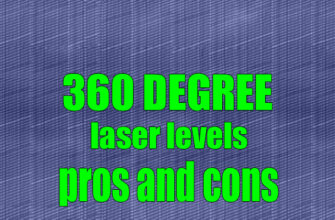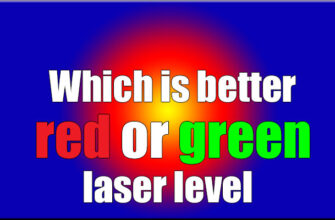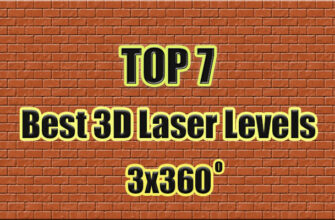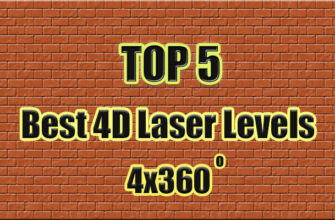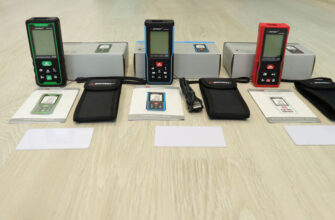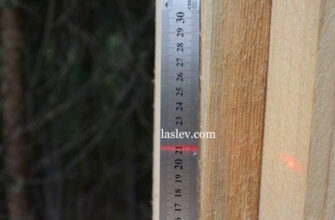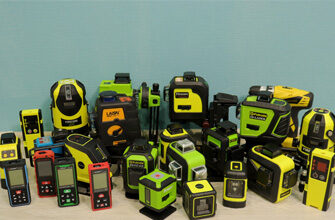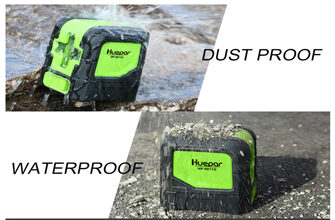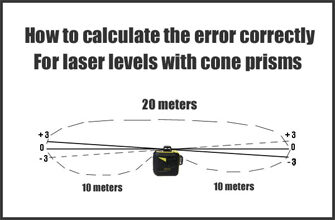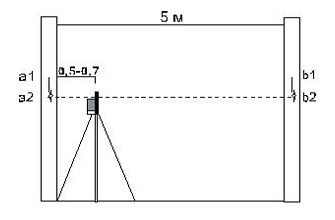The brightness of the laser line in a laser level depends on several factors, but primarily on the power of the transmitter.
It may also depend on the color of the laser light and the quality of the laser module as a whole. More specifically, it is the quality of the transmitter and the quality of the milling and mirror coating of the cone prism.

As a rule, for the same transmitter power, a laser level with a green laser will be brighter than a red laser, all other things being equal.
Not always the brightest laser level is a good thing. If you have very sensitive eyes, the bright green beam may not work for you. In this case, it is better to consider buying a laser level with a red laser.
You look for the brightest laser level in the hope that it will be visible outdoors in clear weather, but with the allowed transmitter powers in these devices, it’s not realistic. Therefore, a special laser receiver is used for outdoor work.
Yes, it is theoretically possible to have a high power laser installed in a laser level that will be clearly visible outside even in sunny weather, but this is very dangerous to your eyes and the eyes of those around you. With such a powerful transmitter, corneal burns would be assured.
Results of the laser level brightness test
There is no possible way to determine the brightness level of a laser line by eye for similar laser levels. It is better to use a precision instrument called a luxmeter to measure it. It will give you a clear understanding of who is brighter.
The most popular models of 3D and 4D laser levels with cone prisms took part in the test.
The brightness table will be updated with other models, so we recommend checking the website occasionally for the latest information.
One more very important clarification before looking at the table. In case anyone does not know, laser levels with CONUS prisms do not have the same uniformity of luminescence over the entire circumference. Therefore, the plane has the brightest area and the dimmest area. For better understanding, measurements were taken in four positions:
- 1st measurement – the brightest side of the plane at 5 meters;
- 2nd measurement – the dimmest side of the plane at 5 meters;
- 3rd measurement – the brightest sector of the plane at 10 meters;
- 4th measurement – the dimmest sector at 10 meters.
| Model name | 5m bright side | 5m dull side | 10m bright side | 10m dull side |
|---|---|---|---|---|
| GROSAM WL-DW16 | 55,9 LUX | 8,2 LUX | 25 LUX | 4,3 LUX |
| DOVOH H3-360G | 54.6 LUX | 9.1 LUX | 24.9 LUX | 4.1 LUX |
| HIBIRU OMNITRONIK 4360 | 43,7 LUX | 9,9 LUX | 22,9 LUX | 4,0 LUX |
| DOVOH P4-360G | 40.9 LUX | 9.6 LUX | 21.7 LUX | 4.0 LUX |
| HUEPAR P03CG | 34.6 LUX | 6.7 LUX | 15.7 LUX | 2.9 LUX |
| FUKUDA MW-94D-4GX | 34,2 LUX | 5,1 LUX | 14,2 LUX | 1,8 LUX |
| HUEPAR S04CG | 30,5 LUX | 5,3 LUX | 14,5 LUX | 1,6 LUX |
| HUEPAR LS41G | 28,0 LUX | 3,2 LUX | 12,7 LUX | 0,6 LUX |
| FIRECORE F304T-XG | 27,4 LUX | 2,9 LUX | 12,7 LUX | 0,6 LUX |
| CIGMAN CM-701 | 26,2 LUX | 4,4 LUX | 10,3 LUX | 1,8 LUX |
| HILDA 4D | 25,4 LUX | 5,9 LUX | 12,3 LUX | 2,1 LUX |
| ZOKOUN IE16R | 24,8 LUX | 5,0 LUX | 9,2 LUX | 1,7 LUX |
| HUEPAR DT03CG | 22,0 LUX | 5,2 LUX | 10,8 LUX | 1,7 LUX |
| FIRECORE F94T-XG | 21,3 LUX | 3,6 LUX | 9,2 LUX | 0,8 LUX |
| HUEPAR 603CG | 19,7 LUX | 4,1 LUX | 8,6 LUX | 1,1 LUX |
| FUKUDA MW-93T-3GX | 18,2 LUX | 4,4 LUX | 7,1 LUX | 1,2 LUX |
| HUEPAR B03CG | 13,4 LUX | 2,7 LUX | 5,1 LUX | 0,6 LUX |
| HUEPAR 904DG | 9,8 LUX | 2,7 LUX | 3,8 LUX | 0,5 LUX |
| FIRECORE F93T-XR (RED) | 9,8 LUX | 4,0 LUX | 4,3 LUX | 1,0 LUX |
| HUEPAR LS04CG | 29,5 LUX | 5,3 LUX | 13,2 LUX | 1,8 LUX |
| HUEPAR S04CG-L | 37,2 LUX | 5,5 LUX | 13,2 LUX | 1,8 LUX |
| KAIWEETS KT360A | 27,3 LUX | 5,1 LUX | 13,5 LUX | 2,1 LUX |
| FIRECORE F504T-XG | 23,1 LUX | 4,3 LUX | 10,9 LUX | 1,6 LUX |
🟩 – The green color indicates the 5 brightest laser levels by column. There may be more than 5 shaded cells in one column because the result values may be repeated. As the table is filled with new models, the top 5 brightest laser levels may change.
